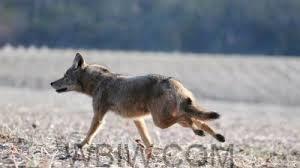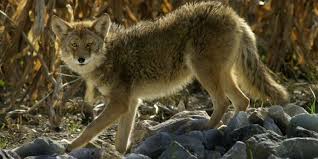
INDIANA – Coyotes are on the move, but sightings are no cause for alarm. Indiana residents are more likely to see them during wintertime.
Coyotes are common everywhere in the state, even in urban areas.

Coyotes become more active during winter as the young leave their families to find a new home and begin breeding. The bare vegetation this time of year increases the chance of catching a glimpse of one.
Young coyotes leave their parents to find a new home, making them more likely to be seen during winter.
And in January, coyotes will be looking to breed, making them even more active. Seeing more coyotes does not mean they are increasing in number.

Coyotes may look larger than they are due to their thick winter coats. The average coyote weighs only 20-30 pounds.
Coyotes are a common member of Indiana’s urban wildlife community, as are raccoons, red foxes, and opossums. Coyotes are also an important member of Indiana’s wildlife community, helping control rodent populations and cleaning up carrion.

To reduce the possibility of pets having a negative interaction with coyotes or any other wildlife, keep pets leashed, in a kennel with a secure top, or indoors.
Problems between coyotes and people are uncommon. Follow these tips for making your property less attractive to coyotes:
- Clean up fallen fruit from trees or gardens.
- Keep garbage secure.
- Make sure pet food and treats are not left outside.
- If you see a coyote around your yard, take down birdfeeders; coyotes could be attracted to the rodents eating the seeds.
- Never intentionally feed a coyote, which could result in its losing its fear of people.
Making a coyote feel unwelcome around people can help maintain its natural fear of humans, but never corner or chase a coyote – you should always allow it to have a clear escape path to get away from you.
If you see a coyote and want it to go away, try to make it uncomfortable:
- Yell.
- Wave your arms.
- Spray it with a hose.
- Throw tennis balls or small stones at it, but don’t throw anything that could be food, like apples.
- Carry a jar of coins to shake or a small air horn to make noise.
Learn more about coyotes at wildlife.IN.gov/5688.htm.



